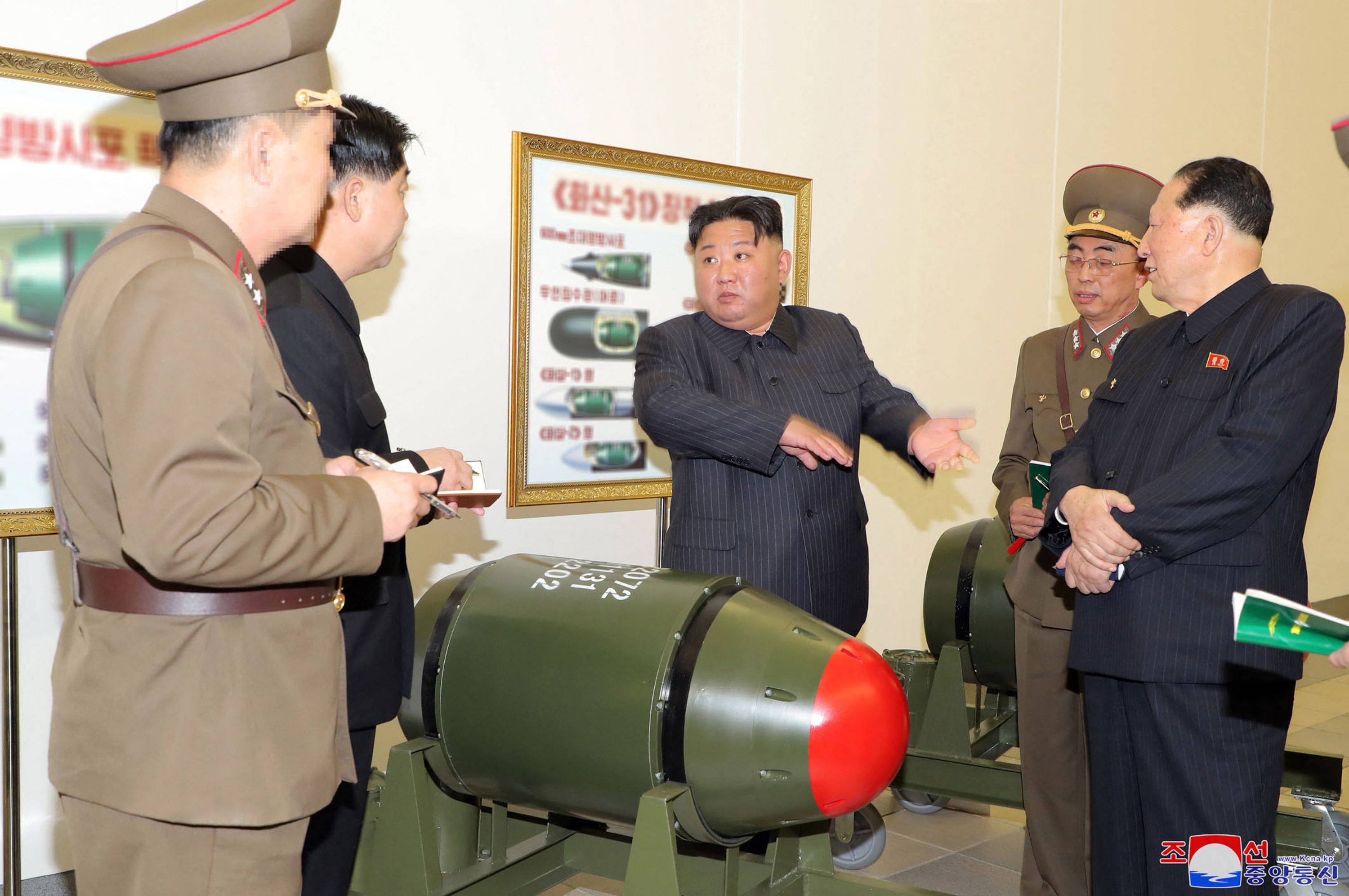North Korea has unveiled new, smaller nuclear warheads for its increasingly potent missiles, photos in state-run media showed Tuesday, as leader Kim Jong Un ordered the boosted production of weapon-grade nuclear materials in his quest to follow through on a pledge to increase his atomic arsenal.
Images accompanying a Korean Central News Agency report showed Kim and senior officials inspecting the new warheads, which were labeled Hwasan-31, as the North Korean leader and other senior officials visited the country’s Nuclear Weapons Institute, where he guided work “for mounting nuclear warheads on ballistic missiles” on Monday.
The KCNA report said Kim was briefed on the “technological specifications and features of ... new tactical nuclear weapons according to the purpose of the operation and targets, interchangeability with different weapons systems” as well as the country’s nuclear counterattack plans.


















With your current subscription plan you can comment on stories. However, before writing your first comment, please create a display name in the Profile section of your subscriber account page.